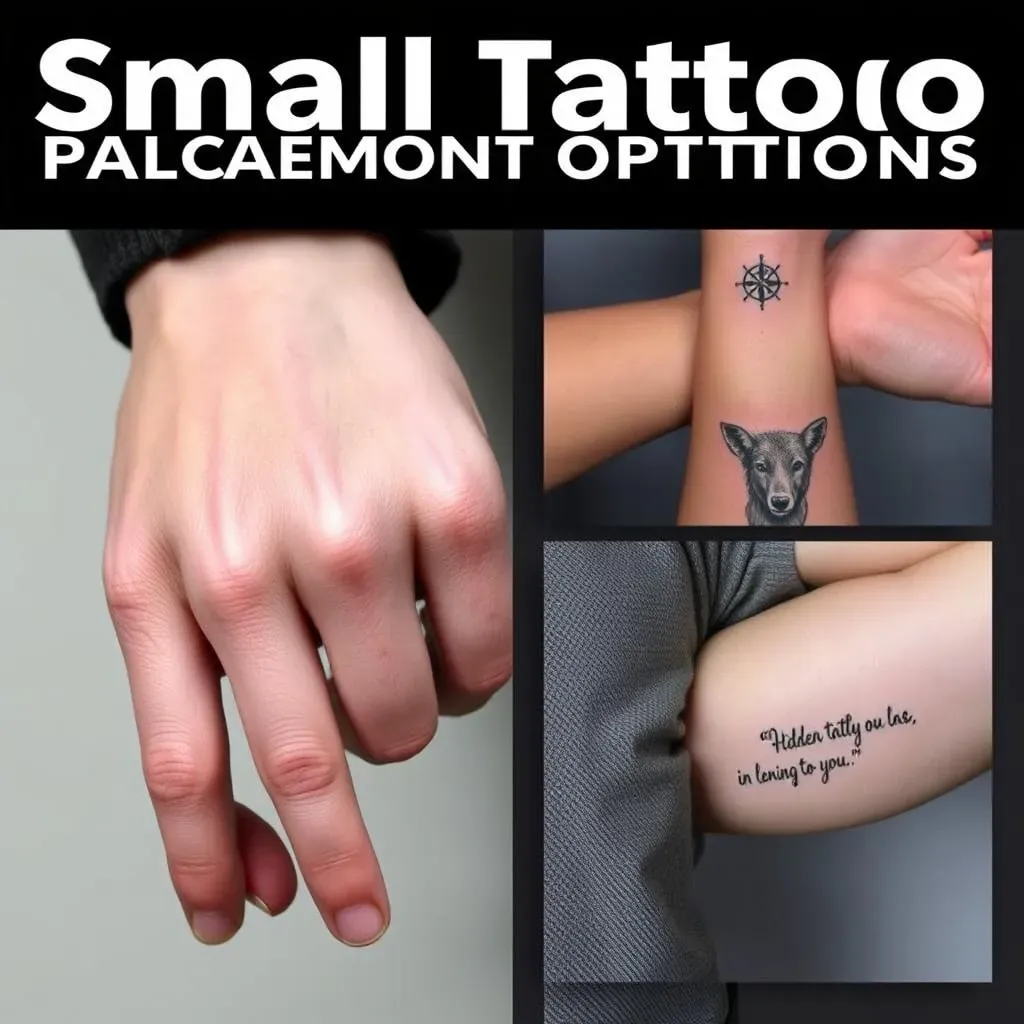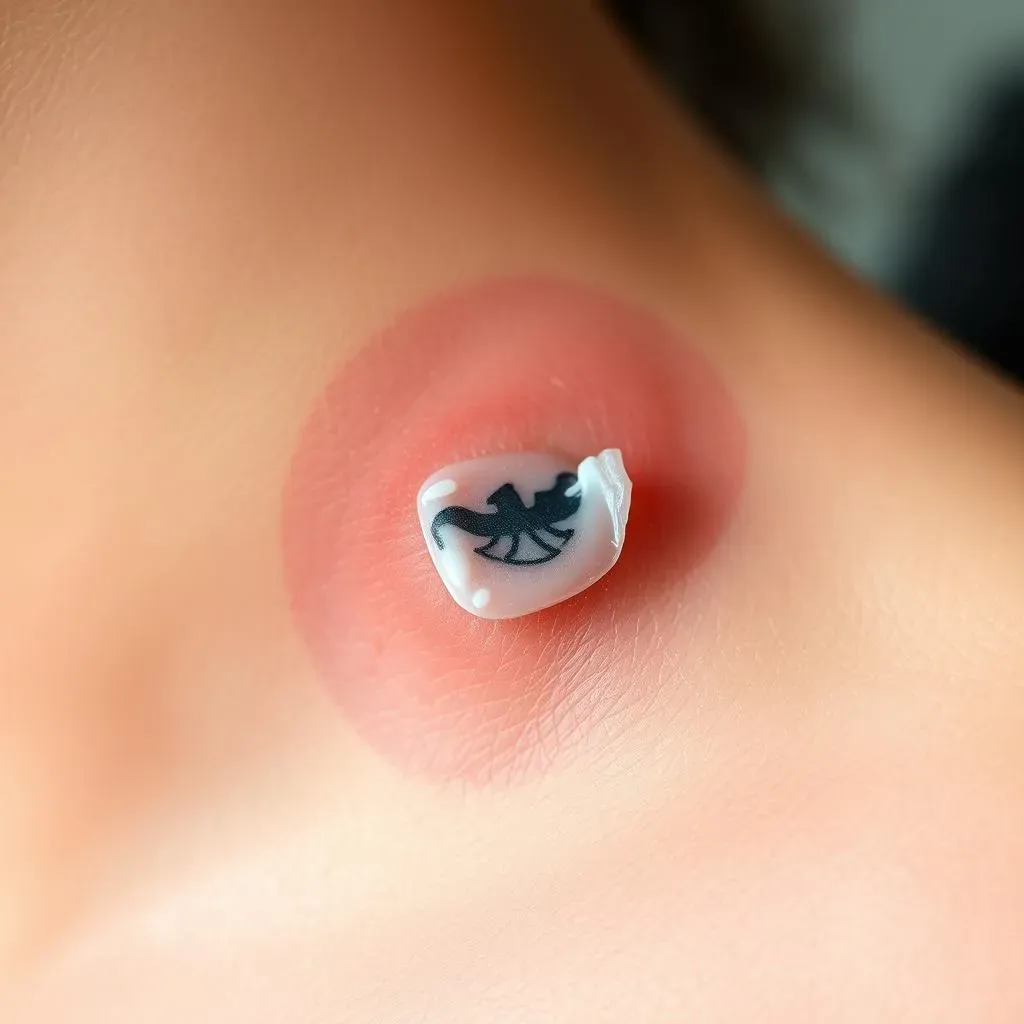Table of Contents
Thinking about getting inked but overwhelmed by the choices? This guide is your passport to the exciting world of small tattoo designs for men. We'll explore over 40 unique and inspiring ideas, from minimalist geometric shapes to powerful symbolic imagery, helping you find the perfect design to express your personality. But choosing the right tattoo is only half the battle! We'll also walk you through the art of selecting the ideal placement on your body, ensuring your small tattoo looks its absolute best. And to keep your new ink looking fresh and vibrant, we'll cover essential aftercare tips and tricks. So, whether you're a seasoned tattoo enthusiast or a curious newcomer, get ready to embark on a journey of self-expression with our ultimate guide to small tattoo designs for men. Let's find your perfect piece of art!
Top 40 Small Tattoo Designs for Men: Inspiration Galore
Top 40 Small Tattoo Designs for Men: Inspiration Galore
Geometric Wonders
Let's kick things off with the ever-popular geometric designs. Think clean lines, sharp angles, and intricate patterns that create a modern and stylish look. These tattoos are incredibly versatile; you can choose a simple shape or a complex arrangement, adapting them to your own personal style. A small geometric tattoo can be a subtle statement piece, or it can act as a foundation for a larger design later on. Check out these small geometric tattoos for some inspiration!
From simple triangles to complex mandalas, the possibilities are endless. Consider incorporating your favorite colors or keeping it classic with black ink. The key is to find a design that resonates with you and reflects your personality. Remember, this is *your* ink, so make it count!
Design | Meaning | Placement |
|---|---|---|
Triangle | Stability, balance | Wrist, finger |
Square | Order, structure | Forearm, neck |
Circle | Unity, infinity | Ankle, behind ear |
Animal Instincts
Next up, let’s explore the world of animal tattoos. Animals hold deep symbolic meaning across many cultures, and a small, well-executed animal tattoo can be both visually stunning and personally significant. A tiny wolf could represent loyalty and strength, while a subtle snake might symbolize transformation and rebirth. For more ideas, check out our post on small meaningful tattoos.
Consider the animal's symbolic meaning and how it aligns with your own values. Do you admire the strength of a bear, the grace of a bird, or the mystery of a cat? The choice is yours! A skilled artist can capture the essence of an animal even in a small-scale design, creating a piece that’s both powerful and unique.
- Wolf: Loyalty, strength
- Bear: Power, courage
- Eagle: Freedom, vision
Symbolic Power
Sometimes, the most impactful tattoos are the simplest. A single, well-placed symbol can speak volumes. Think about symbols that hold personal meaning for you – maybe a compass for your adventurous spirit, a feather for your creativity, or a star for your guiding light. You can explore more small tattoos with meaning in our comprehensive guide.
These minimalist designs are perfect for those who prefer a less-is-more approach to body art. They're understated yet powerful, adding a touch of personality without being overly flashy. The beauty lies in their simplicity and the deep, personal meaning they carry.
Small Tattoo Placement Guide for Men: Finding the Perfect Spot
Small Tattoo Placement Guide for Men: Finding the Perfect Spot
Wrist Wonders
The wrist is a classic spot for small tattoos, offering easy visibility and a relatively painless inking experience. It's a great canvas for minimalist designs, delicate script, or small symbolic images. Think about a tiny compass, a simple geometric shape, or a meaningful initial. The wrist allows for easy showcasing of your ink, but it's also subtle enough to hide if needed. Check out our ideas on small wrist tattoos for more inspiration!
However, keep in mind that the skin on your wrist is constantly moving, so very detailed designs might not age as well as simpler ones. Also, consider your profession – some jobs might frown upon visible tattoos. Choose a design that complements your lifestyle and personal style.
- Simple geometric shapes
- Delicate script or initials
- Small symbolic images
Forearm Flair
The forearm is another popular choice, offering a larger canvas than the wrist but still ideal for small tattoos. This area is relatively flat and easy to ink, making it suitable for a wider range of designs, from intricate details to bold statements. You could go for a small animal portrait, a meaningful quote, or a collection of smaller, related images. For more ideas, check out our post on small forearm tattoos.
One advantage of the forearm is that it's easily shown off or covered, depending on the occasion. However, be aware that the skin on the forearm is prone to sun exposure, so proper aftercare and sun protection are crucial to maintain the vibrancy of your tattoo. Consider your daily activities and how much sun exposure your tattoo might receive.
Design Type | Pros | Cons |
|---|---|---|
Minimalist | Subtle, versatile | May fade faster |
Detailed | Visually striking | More prone to distortion |
Hidden Gems
For those who prefer a more discreet approach, consider placing your small tattoo in a less visible area. The back of the neck, the inner bicep, or even the ribs are all excellent options for a hidden tattoo that only you (or those close to you) get to see. This is a great choice if you need to keep your ink concealed for work or other reasons. We have a lot of ideas for hidden tattoos for you to check out!
However, remember that less visible areas might require more frequent touch-ups due to natural fading from lack of sun exposure. Also, consider the potential discomfort level of different placement areas. The ribs, for example, are known to be a more sensitive area to get inked.
Small Tattoo Aftercare: Ensuring Your Ink Stays Stunning
Small Tattoo Aftercare: Ensuring Your Ink Stays Stunning
The Healing Process: What to Expect
So, you've got your awesome new small tattoo – congrats! Now, the real work begins: aftercare. Think of this as the final, crucial step in creating a masterpiece that will last. Proper aftercare isn't just about aesthetics; it's about preventing infection and ensuring your ink heals beautifully. Neglecting aftercare can lead to fading, scarring, or even infection – not a good look! Check out our guide on small tattoos with meaning to ensure your tattoo looks great for years to come.
The first few days are critical. Your skin will likely be a little sore, red, and slightly swollen. This is normal! Follow your artist's specific instructions carefully, but generally, you'll want to keep the area clean and moisturized. Gentle washing with unscented soap and water is key; avoid harsh scrubbing or soaking in baths or pools. Apply a thin layer of the recommended ointment as instructed, and leave the tattoo uncovered (unless otherwise advised) to allow it to breathe.
- Keep it clean
- Keep it moisturized
- Avoid sun exposure
Long-Term Care: Keeping Your Ink Vibrant
Once the initial healing period is over (usually 2-4 weeks), your tattoo will still need some TLC. The most important aspect of long-term care is sun protection. UV rays are the enemy of ink, causing fading and discoloration over time. Always apply a broad-spectrum sunscreen with an SPF of 30 or higher to the tattooed area before going outside, even on cloudy days. For more tips, check out our post on subtle tattoos for men.
Beyond sunscreen, keeping your skin hydrated is also crucial. Use a good quality moisturizer regularly to keep your skin healthy and your ink vibrant. Avoid harsh chemicals and excessive exfoliation, as these can damage the skin and affect the tattoo's appearance. A healthy lifestyle also contributes to the longevity of your tattoo – a balanced diet, regular exercise, and sufficient sleep all promote healthy skin regeneration.
Action | Frequency | Importance |
|---|---|---|
Apply Sunscreen | Daily | Prevents fading |
Moisturize | Twice Daily | Keeps skin healthy |
Avoid harsh chemicals | Always | Protects ink |